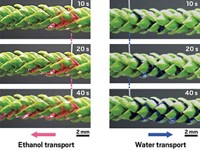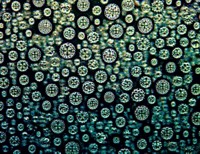Advertisement
Grab your lab coat. Let's get started
Welcome!
Welcome!
Create an account below to get 6 C&EN articles per month, receive newsletters and more - all free.
It seems this is your first time logging in online. Please enter the following information to continue.
As an ACS member you automatically get access to this site. All we need is few more details to create your reading experience.
Not you? Sign in with a different account.
Not you? Sign in with a different account.
ERROR 1
ERROR 1
ERROR 2
ERROR 2
ERROR 2
ERROR 2
ERROR 2
Password and Confirm password must match.
If you have an ACS member number, please enter it here so we can link this account to your membership. (optional)
ERROR 2
ACS values your privacy. By submitting your information, you are gaining access to C&EN and subscribing to our weekly newsletter. We use the information you provide to make your reading experience better, and we will never sell your data to third party members.
Materials
Microscopic Fibers Coil Together
Solvent evaporation prompts tiny hairlike fibers to twist around each other—and grab nearby particles
by Sophie L. Rovner
January 12, 2009

What at first resembles a sea anemone clasping two pearls is really a micrometer-scale construct created through a new technique devised at Harvard University.


To make these objects, materials science professor Joanna Aizenberg, applied math professor L. Mahadevan, and colleagues fabricate an array of hairlike, epoxy fibers poking up from a substrate, which they then submerge in a liquid such as ethanol or toluene. As the liquid evaporates, capillary forces cause the flexible hairs to clump and then twist together (Science 2009, 323, 237). The ropelike structures formed can themselves twine with other ropes. "The process is similar to the formation of dreadlocks" from wet, curly hair, Aizenberg explains.
If the liquid contains suspended particles, the entwining hairs capture them in a tenacious grip that can be loosened by, say, a change in pH.
"The structures self-assemble under the influence of simple physical interactions which can be understood and controlled," says Peter Fratzl, who investigates biomimetic materials at the Max Planck Institute of Colloids & Interfaces, in Potsdam, Germany. "This opens the possibility to create nanosystems with completely new functions." Potential applications include adhesives, switchable photonic devices, or drug delivery systems.




Join the conversation
Contact the reporter
Submit a Letter to the Editor for publication
Engage with us on Twitter